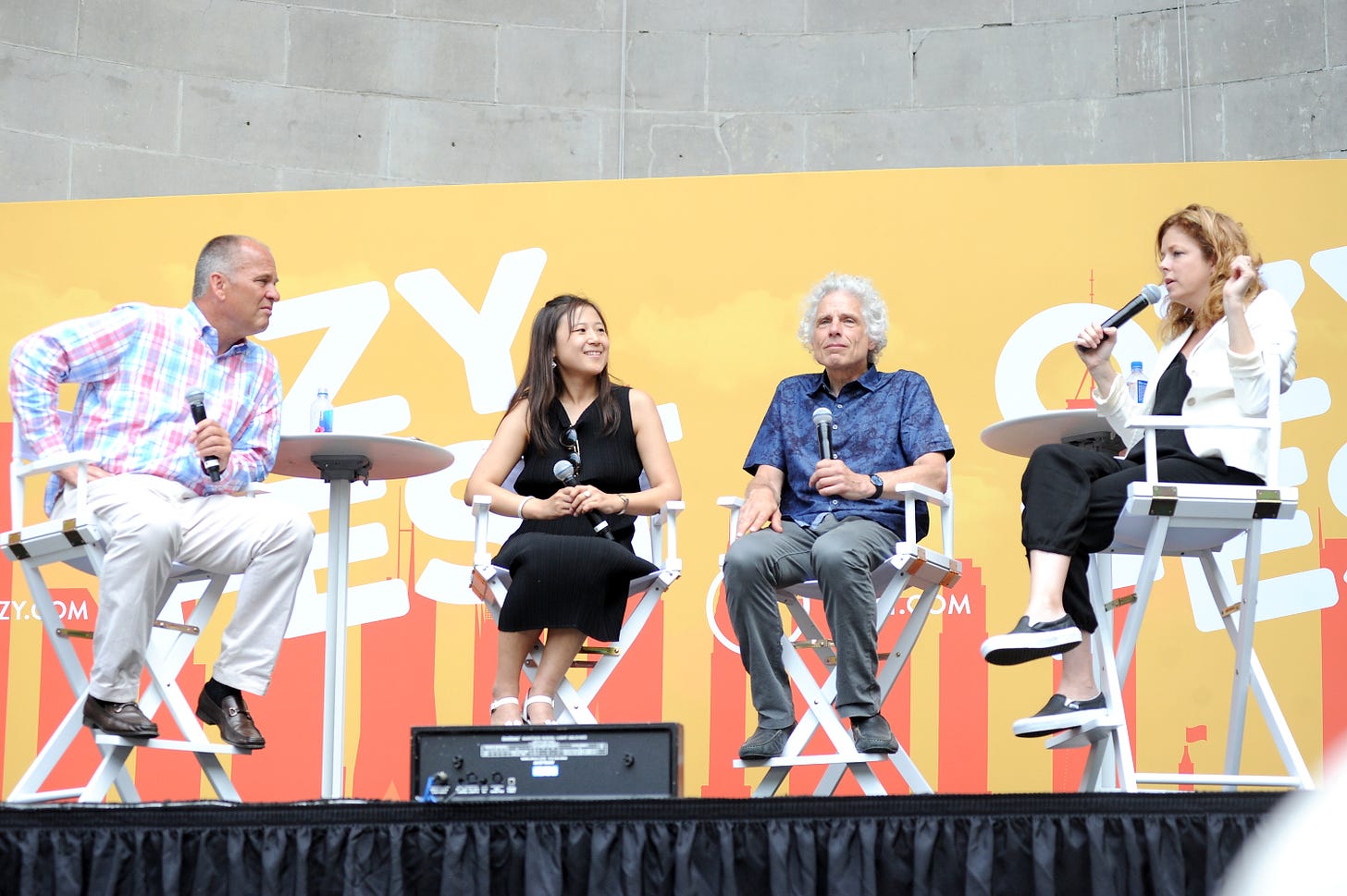
All it took was one column by Ben Smith to throw Ozy into the turmoil which might yet end with its death. Over the last eight years, Ozy has been the darling of investors, who have apparently thrown tens of millions of dollars into the media company. Yet, as Smith’s New York Times column of September 23 very quickly made clear, Ozy was one big Potemkin company—a seemingly impressive edifice of newsletters, websites and streaming shows that were better at attracting investors than audiences.
Carlos Watson, the charismatic CEO of Ozy, was often the star of Ozy content, stories that focused on diversity and transideological co-operation.
Smith’s column opened with a startling anecdote about a February 2nd Zoom meeting that Ozy had arranged between Goldman Sachs and Youtube. As Smith tells the story:
The scheduled participants included Alex Piper, the head of unscripted programming for YouTube Originals. He was running late and apologized to the Goldman Sachs team, saying he’d had trouble logging onto Zoom, and he suggested that the meeting be moved to a conference call, according to four people who were briefed on the meeting, all of whom spoke on the condition of anonymity to reveal details of a private discussion.
Once everyone had made the switch to an old-fashioned conference call, the guest told the bankers what they had been wanting to hear: that Ozy was a great success on YouTube, racking up significant views and ad dollars, and that Mr. Watson was as good a leader as he seemed to be. As he spoke, however, the man’s voice began to sound strange to the Goldman Sachs team, as though it might have been digitally altered, the four people said.
After the meeting, someone on the Goldman Sachs side reached out to Mr. Piper, not through the Gmail address that was provided to participants before the meeting, but through Mr. Piper’s assistant at YouTube. That’s when things got weird.
As it turns out, the “Mr. Piper” of the meeting wasn’t the real Alex Piper but an impersonator at Ozy. Ben Smith’s sources name Samir Rao, the co-founder and chief operating officer of Ozy, as the pretend Piper but there’s some uncertainty about that.
Impersonating a Youtube executive is a particularly bold example of Ozy’s larger shell game, which used a number of deceptive methods to make itself appear much more popular than it was.
Con games almost always make for entertaining stories but the true import of Ozy isn’t in the deception but the deceived. Ozy lived (and may perhaps perish) by the adage of “fake it till you make it.” That’s all too common in Silicon Valley.
What’s more striking is that there are financiers for this fakery. Why did both investors and advertisers shower Ozy with so much money for nearly a decade, with so little credible evidence that it could establish a significant user base.
The best explanation came from Lauren Williams, CEO and a co-founder of Capital B and the former editor in chief of Vox, who writes from the vantage point of someone trying to create a media company that she describes as “a nonprofit news organization for Black audiences.”
Writing in the New York Times, Williams argues that Ozy was selling diversity, but of a particular flavor: safe diversity, diversity that doesn’t rock the boat and presents a message of optimistic problem solving.
“Safe, innocuous content is what attracts advertisers, if not audience,” Williams notes. “Advertisers want to say they support Black-run media, but they’re terrified of the topics and stories that a lot of Black-run media companies might be most mission-driven to publish and audiences might be most attracted to.” In a follow-up column (which include quotes from Williams), Ben Smith made a similar point that Ozy offered “hopeful futurism” and “diversity without the conflict” which “strongly appealed to the elites who poured in the cash. They also liked being in the company of Ozy’s founder, an executive who had earned his degrees at Harvard and Stanford, had worked at Goldman Sachs and McKinsey & Company, and had put his billionaire investors entirely at ease.”
Ozy specialized in a sort of flimflammery that might yet get its executives in legal trouble. But this sort of cheating seems like a minor scandal compared with the self-deception of the investors and advertisers. Those are people with the real money and power. They are very vested in promoting media that is fundamentally at odds with the world as it exists. Whatever might be said of Ozy’s gargantuan swindle, the ability of the plutocratic investor class to foster sham media is the real scandal here.
There’s been a lot of chatter on the right, and also in some precincts of the left, about “woke capitalism.” What Ozy proves is that woke capitalism will always be far more capitalist than woke.
(Edited by Emily M. Keeler)
Share and Subscribe
If you enjoyed this post, please share:
Or subscribe:




"Kumbayaism" was the term used to describe "safe diversity" in grassroots movements before now, and it sells big, but rarely delivers on its promises. Safe spaces by definition cannot be meaningfully intersectional or able to tackle major issues outside their own boundaries because real audiences are not as universal nor homogeneous as advertisers believe them to be.